 As you have noticed by now, Lapis Lazuli has been used for religious purposes before any other. Its uses go from the use in funeral rituals to the worshiping of gods. Lapis Lazuli Religion explains how the hand of God practically wrote on lapis Tablets. The importance for the Buddhists and Egyptians in their religions and Gods and how the Catholic Religion also used Lapis for almost every painting they ordered.
As you have noticed by now, Lapis Lazuli has been used for religious purposes before any other. Its uses go from the use in funeral rituals to the worshiping of gods. Lapis Lazuli Religion explains how the hand of God practically wrote on lapis Tablets. The importance for the Buddhists and Egyptians in their religions and Gods and how the Catholic Religion also used Lapis for almost every painting they ordered.
Some of the ritual veneration for the earlier gods was to acquire significant splendor to decorate the relics of earliest churches ad temples.
Lapis Lazuli in Religion of Ancient World
Tablets of the Law
Thephrastus, an ancient scholar deciphered that sapphire in the Bible really meant Lapis Lazuli.
High Priest Breastplate
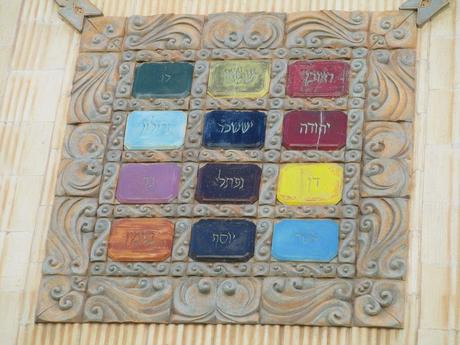
The First Breastplate
Lapis Lazuli was the fifth stone representing the tribe of Issachar.
The Archbishop of Mainz in his Rabanus Maurus (786-856 AD) said "Lapis Lazuli, the fifth stone signified Height of Celestial Hope".
The Second Breastplate
The Second Breastplate was made 800 years later by a seal cutter. It was believed Lapis Lazuli was also used again as the fifth stone.
The Breastplate had the stones arranged in four rows of three stones across. It measured eight square inches. Each stone was approximately two inches by two inches in size.
Temple Construction
It has also been discovered by archaeologists that foundation deposits included two rectangular tablets particularly in the Ishtar Temples.
This tradition from 2000B.C shows us that lapis was not only to embellish a temple but also as a mixed element in the brick mortar of temple walls.
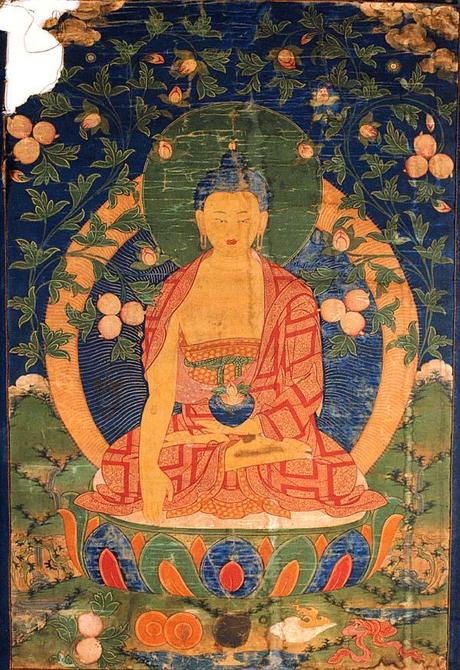
The best example of blues influence on Buddhism is the "Blue Buddha" also known as the Buddha of Medicine or Healing. It has a distinctive deep blue of Lapis Lazuli.
The Lapis Healing Master is one of the most honored figures in the Buddhist pantheon. In one of the main sutras (canonical texts) concerning the Medicine Buddha, Shakyamuni tells his close disciple and attendant Ananda:
The Egyptians made amulets of Deities inlayed with lapis like Osiris, Horus, Maat, Tet, Ra, Basket and also Ibis. Magnificent amulets like these ones you can also find in Nammu.com.
In the Egyptians funeral rituals, lapis was also extensively used in every aspect of the ceremony. They believed that lapis would help them cross to the afterlife.
Renaissance
The monks in charge of the sacred scripts and the Ecclesiastic Manuscripts also regulated the trade of lapis. The Ecclesiastic Manuscripts were bordered with crushed lapis pigment.
In addition, the Bishops also made ecclesiastical rings in Lapis because it was considered a chaste stone. Lapis was also commonly used for religious shrines and for their artisans, painters and decorative elements on the altars of churches.

The pontiff Clement VI (1342-1352) ordered the painting of the Chapel St. Michel, the Chapel St. Martial and also the Chapel of St. Jean. Italian artists from the Siennoise School directed by Matteo Giovanetti de Vitero were the ones in charge of the painting of the Chapel of Avignon. Matteo Giovanetti was also the official painter of many popes.
Master artists like Michelangelo, da Vinci, Fra Angelico and other artists also used lapis on their religious arts.
The most exquisite and my particular favorite in the whole world is Michelangelo's Sistine Chapel (1475-1564). Its use of lapis pigment for the blues of heaven is magnificent.
Lapis Lazuli was often reserved for the cloaks of Christ, angels as well as the Virgin Mary.
In conclusion, a stone also used to revere Gods or God. Its spiritual journey through the Silk Route to acquire the Lapis Lazuli for temples and churches superseded primitive quests.
Goddesses and Gods That Worship Lapis Lazuli
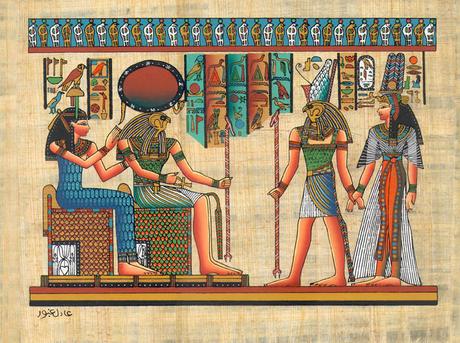
Goddesses Worshiping Lapis Lazuli

Hathor, meaning "House of Horus", was a goddess of many things, from the celestial to the alcoholic! She was a celestial goddess, The Mistress of Heaven. A Goddess of love, music and beauty as the Goddess of Love, Cheerfulness, Music and Dance. Hathor was known as the Mother of Mothers and the Celestial Nurse who presided over women, fertility, children and childbirth.
Hathor was also the "Lady of Greenstone and Malachite" and "Lady of Lapis Lazuli", preside over these materials as well as being a goddess of the fringes where they were mined. Lapis Lazuli adorned many pieces of Ancient Egyptian jewelry. This fits in well with Hathor´s role of goddess of beauty. She was a goddess of the west and a goddess of Punt and Sinai. This meant she was a goddess of far off places. This is perhaps why Hathor was also known as the "Lady to the Limit". The Egyptians believed her to be a goddess who rules over the known universe.
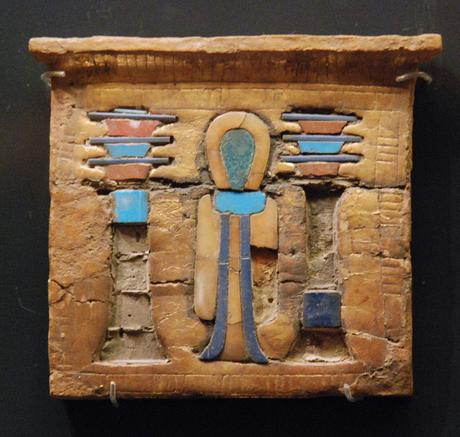
Inanna was the most prominent female deity in ancient Mesopotamia. As early as the Uruk period (ca. 4000-3100B.C), Inanna was associated with the city of Uruk.
She was the Sumerian Goddess of the Underworld.
Inanna was also the patron goddess of the E-Anna temple at the city of Uruk, which was her main cult center. She was one of the most widely venerated deities in the ancient Sumerian pantheon.
Inanna dresses elaborately for the visit, with a turban, a wig, a Lapis Lazuli necklace, beads upon her breast, the 'pala dress' (the ladyship garment), mascara, pectoral, a golden ring on her hand, and she also held a lapis lazuli measuring rod. These garments are each representations of powerful mes she possesses. Perhaps Inanna's garments, unsuitable for a funeral, along with Inanna's haughty behavior, make Ereshkigal suspicious.
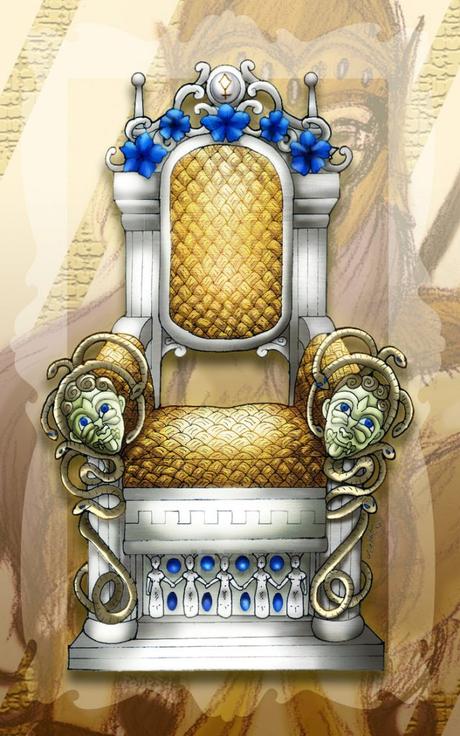
Lapis Lazuli honors Athena. According to Wikipedia she is the Greek Goddess of war and Wisdom. Athena's throne was made of silver. Along the back and the sides were golden baskets, because Athena is also the goddess of crafts. There was also a violet crown made out of blue lapis lazuli set atop the throne. The arms ended in the heads of a smiling Gorgon. There was an owl on her throne.
She was the Greek Goddess of Marriage and the Queen of all Gods and Goddesses on Mt. Olympus. She was the wife of Zeus. Her gem is also the Lapis Lazuli which helps promote honesty and open communication. She is particularly endeared to wives and lovers, as well as anyone who fights for those who cannot stand up for themselves.
She was also known as the Goddess of Air. For this reason she is compared with Lapis Lazuli, a stone associated with the sky.
Lapis Lazuli has also been used to honor the Celtic river goddess Danu.
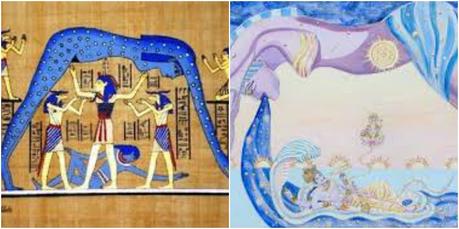
Lapis Lazuli was one of the favorite stones of the Egyptians. It was thought to be sacred to the Nuit of the heavens, the star goddess.

Ereshkigal
Ereshkigal is the Sumerian and Babylonian Death Goddess. She was the Queen of the Dead and of the Underworld.
Brigid, the Celtic goddess of fire (the forge and the hearth), poetry, healing, childbirth, and unity, is celebrated in many European countries. She is known by many names, including that of Saint Brigid who is, perhaps, the most powerful religious figure in Irish history.
Gods Worshiping Lapis Lazuli
Christian God
It is likely that God made the law and the commands on Lapis Lazuli. It was the pavement under God´s feet.
"Moses and Aaron, Nadab and Abihu and the seventy elders of Israel went up and saw the God of Israel. Under his feet was something like a pavement made of Lapis Lazuli, clear as the sky itself.
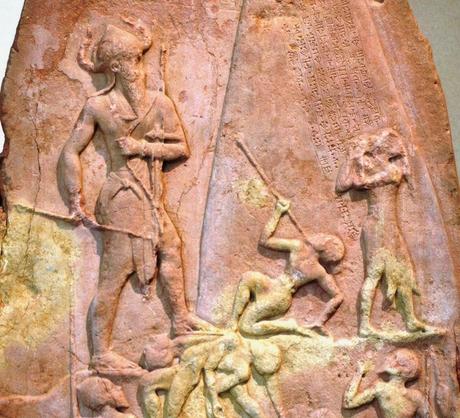
Sim is the Sumerian Moon god. It was said that he had a long flowing beard, bright as Lapis Lazuli.
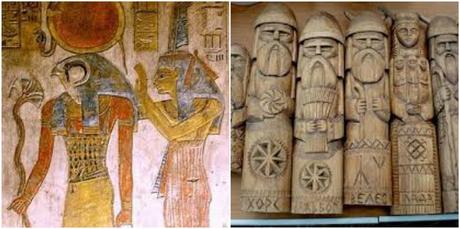 Ra
Ra

The Egyptian Sun god Ra was also described as having Lapis Lazuli hair.
The Sun and Father God who is called Grandfather of Russia. He travels in a chariot across the sky, bringing with the morning light, justice and abundance.
It is said that the gods are always near us but if you wish to call upon one of these goddesses, place a piece of Lapis Lazuli as an offering on your altar.
